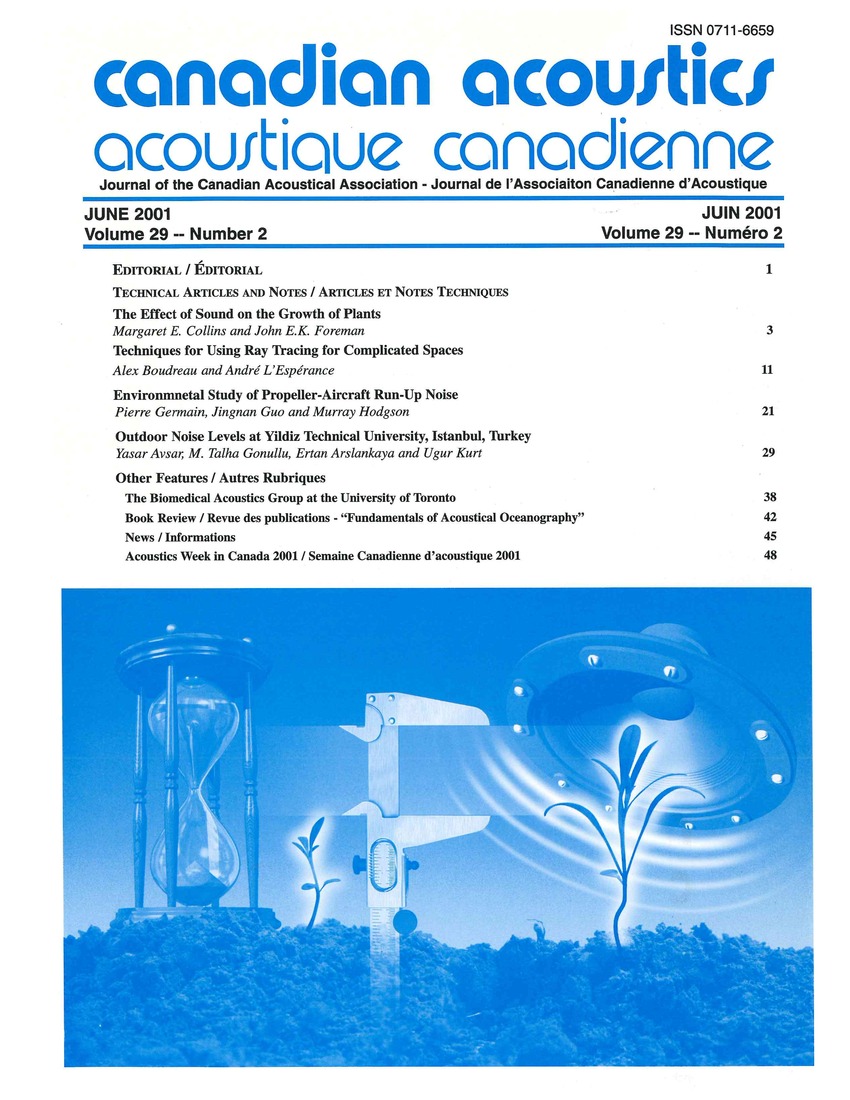Techniques for using ray tracing for complicated spaces
Keywords:
Acoustic noise, Acoustic waves, Noise abatement, Transfer functions, Acoustic room modelling, Acoustic treatmentAbstract
During the last decade, the ray tracing method has contributed considerably to improve the prediction accuracy of acoustic room modelling. Ray tracing methods allow the analysis of complicated sound field for any room. However, the use of these methods and their validation are not always trivial. Even so, right and useful modelling is obtained only when each construction stage of the model is well done. The objective of this paper is to present, through a complicated example (a hydroelectric power station), some original techniques of modelling and validation. The identification of noise sources and the determination of their acoustic power, the representation of a non-single point source, the validation and some modelling techniques meant to reduce time computation will be presented. Furthermore, an efficient method for the evaluation of noise reduction provided by the various treatments will also be shown. This method, based on an evaluation of transfer functions between noise sources and different computation points in the room, can be used to choose the best acoustic treatment for a given noise reduction objective. All techniques presented in this paper have been applied and validated on an industrial case.Additional Files
Published
How to Cite
Issue
Section
License
Author Licensing Addendum
This Licensing Addendum ("Addendum") is entered into between the undersigned Author(s) and Canadian Acoustics journal published by the Canadian Acoustical Association (hereinafter referred to as the "Publisher"). The Author(s) and the Publisher agree as follows:
-
Retained Rights: The Author(s) retain(s) the following rights:
- The right to reproduce, distribute, and publicly display the Work on the Author's personal website or the website of the Author's institution.
- The right to use the Work in the Author's teaching activities and presentations.
- The right to include the Work in a compilation for the Author's personal use, not for sale.
-
Grant of License: The Author(s) grant(s) to the Publisher a worldwide exclusive license to publish, reproduce, distribute, and display the Work in Canadian Acoustics and any other formats and media deemed appropriate by the Publisher.
-
Attribution: The Publisher agrees to include proper attribution to the Author(s) in all publications and reproductions of the Work.
-
No Conflict: This Addendum is intended to be in harmony with, and not in conflict with, the terms and conditions of the original agreement entered into between the Author(s) and the Publisher.
-
Copyright Clause: Copyright on articles is held by the Author(s). The corresponding Author has the right to grant on behalf of all Authors and does grant on behalf of all Authors, a worldwide exclusive license to the Publisher and its licensees in perpetuity, in all forms, formats, and media (whether known now or created in the future), including but not limited to the rights to publish, reproduce, distribute, display, store, translate, create adaptations, reprints, include within collections, and create summaries, extracts, and/or abstracts of the Contribution.


